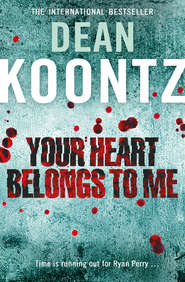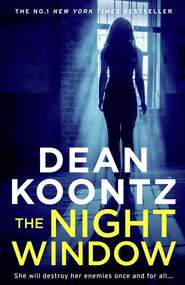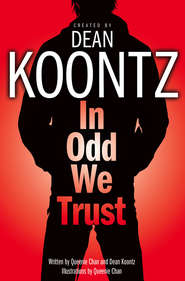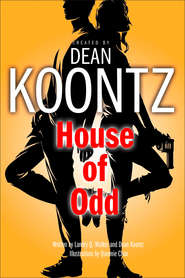По всем вопросам обращайтесь на: info@litportal.ru
(©) 2003-2025.
✖
What the Night Knows
Настройки чтения
Размер шрифта
Высота строк
Поля
Chapter 37 (#litres_trial_promo)
Chapter 38 (#litres_trial_promo)
Chapter 39 (#litres_trial_promo)
Chapter 40 (#litres_trial_promo)
Chapter 41 (#litres_trial_promo)
Chapter 42 (#litres_trial_promo)
Chapter 43 (#litres_trial_promo)
Chapter 44 (#litres_trial_promo)
Chapter 45 (#litres_trial_promo)
Chapter 46 (#litres_trial_promo)
Chapter 47 (#litres_trial_promo)
Chapter 48 (#litres_trial_promo)
Chapter 49 (#litres_trial_promo)
Chapter 50 (#litres_trial_promo)
About the Author (#litres_trial_promo)
Also by the Author (#litres_trial_promo)
Copyright (#litres_trial_promo)
About the Publisher (#litres_trial_promo)
Chapter 1 (#ulink_77ef0b36-72aa-5da8-b109-eb58d28b9d15)
What year these events transpired is of no consequence. Where they occurred is not important. The time is always, and the place is everywhere.
Suddenly at noon, six days after the murders, birds flew to trees and sheltered roosts. As if their wings had lanced the sky, the rain fell close behind their flight. The long afternoon was as dim and drowned as twilight in Atlantis.
The state hospital stood on a hill, silhouetted against a gray and sodden sky. The September light appeared to strop a razor’s edge along each skein of rain.
A procession of eighty-foot purple beeches separated the inbound and the outbound lanes of the approach road. Their limbs overhung the car and collected the rain to redistribute it in thick drizzles that rapped against the windshield.
The thump of the wipers matched the slow, heavy rhythm of John Calvino’s heart. He did not play the radio. The only sounds were the engine, the windshield wipers, the rain, the swish of tires turning on wet pavement, and a memory of the screams of dying women.
Near the main entrance, he parked illegally under the portico. He propped the police placard on the dashboard.
John was a homicide detective, but this car belonged to him, not to the department. The use of the placard while off duty might be a minor violation of the rules. But his conscience was encrusted with worse transgressions than the abuse of police prerogatives.
At the reception desk in the lobby sat a lean woman with close-cropped black hair. She smelled of the lunchtime cigarettes that had curbed her appetite. Her mouth was as severe as that of an iguana.
After glancing at John’s police ID and listening to his request, she used the intercom to call an escort for him. Pen pinched in her thin fingers, white knuckles as sharp as chiseled marble, she printed his name and badge number in the visitors’ register.
Hoping for gossip, she wanted to talk about Billy Lucas.
Instead, John went to the nearest window. He stared at the rain without seeing it.
A few minutes later, a massive orderly named Coleman Hanes escorted him to the third – top – floor. Hanes so filled the elevator that he seemed like a bull in a narrow stall, waiting for the door to the rodeo ring to be opened. His mahogany skin had a faint sheen, and by contrast his white uniform was radiant.
They talked about the unseasonable weather: the rain, the almost wintry cold two weeks before summer officially ended. They discussed neither murder nor insanity.
John did most of the talking. The orderly was self-possessed to the point of being phlegmatic.
The elevator opened to a vestibule. A pink-faced guard sat at a desk, reading a magazine.
“Are you armed?” he asked.
“My service pistol.”
“You’ll have to give it to me.”
John removed the weapon from his shoulder rig, surrendered it.
On the desk stood a Crestron touch-screen panel. When the guard pressed an icon, the electronic lock released the door to his left.
Coleman Hanes led the way into what appeared to be an ordinary hospital corridor: gray-vinyl tile underfoot, pale-blue walls, white ceiling with fluorescent panels.
“Will he eventually be moved to an open floor or will he be kept under this security permanently?” John asked.
“I’d keep him here forever. But it’s up to the doctors.”
Hanes wore a utility belt in the pouches of which were a small can of Mace, a Taser, plastic-strap handcuffs, and a walkie-talkie.
All the doors were closed. Each featured a lock-release keypad and a porthole.
Seeing John’s interest, Hanes said, “Double-paned. The inner pane is shatterproof. The outer is a two-way mirror. But you’ll be seeing Billy in the consultation room.”
This proved to be a twenty-foot-square chamber divided by a two-foot-high partition. From the top of this low wall to the ceiling were panels of thick armored glass in steel frames.
In each panel, near the sill and just above head height, two rectangular steel grilles allowed sound to pass clearly from one side of the glass to the other.
The nearer portion of the room was the smaller: twenty feet long, perhaps eight feet wide. Two armchairs were angled toward the glass, a small table between them.
The farther portion of the room contained one armchair and a long couch, allowing the patient either to sit or to lie down.
On this side of the glass, the chairs had wooden legs. The back and seat cushions were button-tufted.











